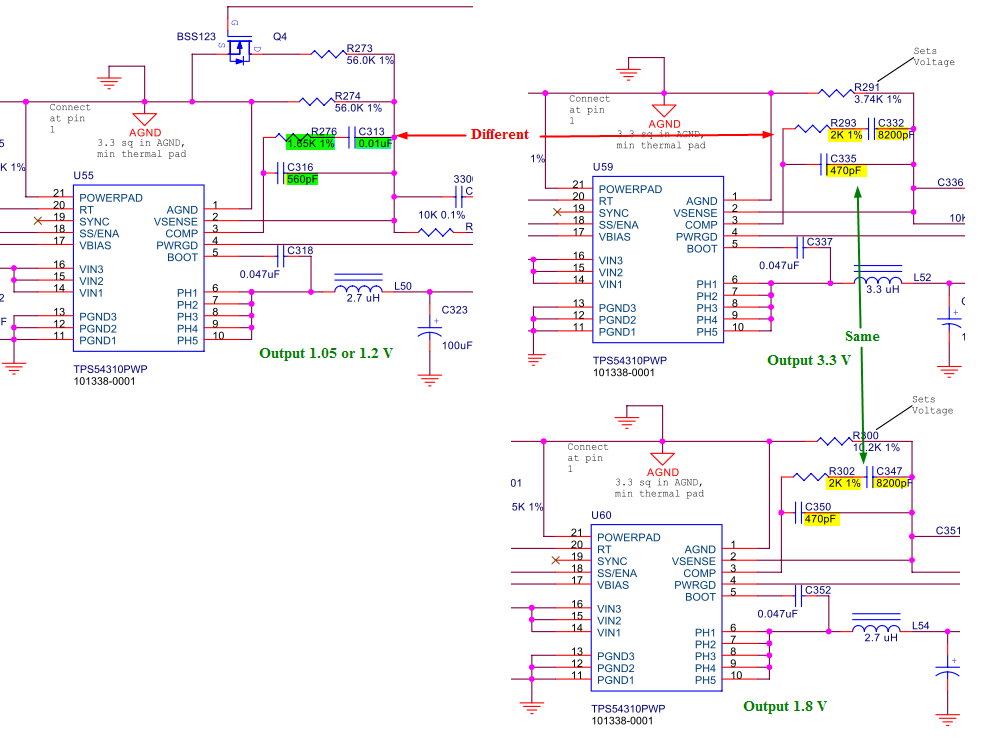Hi All,
I would like to ask a question on 54310 compensation network.

On a design I am referencing (SpectrumDigital EVM6437), I noticed that
|
Output voltage |
Compensation network |
|
1.05 or 1.2V |
1.65K, 0.01uF || 560pF |
|
3.3 V |
2K, 8200pF || 470pF |
|
1.8 V |
2K, 8200pF || 470pF |
How are these compensation network components determined?
1. According to SLVS412d (54310 manual), output voltage is determined by R4 and R5 as in Fig.10 of the manual schematic. So do I still have to adjust compensation network after output voltage is determined/
2. If different output voltage corresponds to different compensation network, why 3.3V and 1.8V share the same set of compensation network element values? Is there any mistake here?
3. For 1.05V/1.2V case, after changing (selecting) the output by changing resistor values, does the compensation needs to be changed?
I am bewildered by the large number of equations in SLVA109 - Designing With the TPS54310 Synchronous Buck Regulator, can there be any quick solution on these value determination?
Thanks,
Bob
